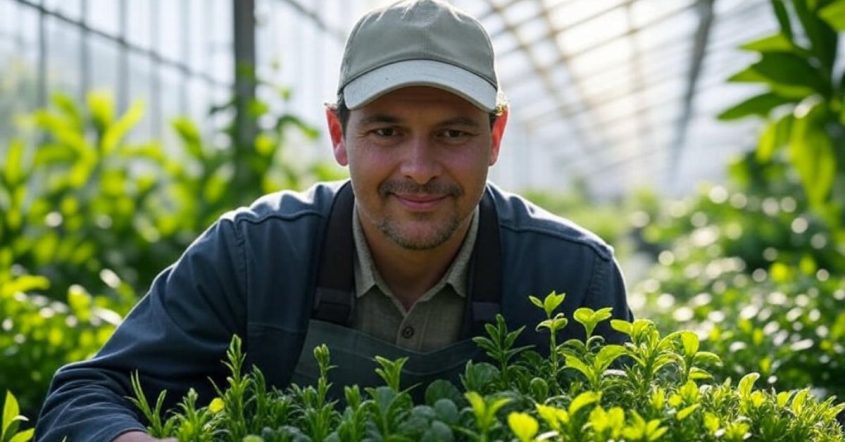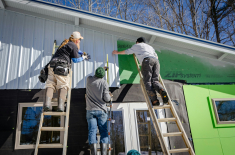Greenhouses are an important part of modern agriculture. They provide a controlled environment to grow fruits, vegetables, flowers, and other crops year-round. However, running a greenhouse can be costly and energy-intensive. To get the best results and reduce expenses, it is important to optimize greenhouse operations. This means making changes that improve efficiency, save resources, and increase crop yields.
In this article, we will explore the best strategies to help greenhouse operators improve their systems. From saving energy to using smart technology, these tips will help create a sustainable and productive greenhouse.
Energy Efficiency and Climate Control
Energy is one of the biggest costs in greenhouse operations. It is used for heating, cooling, lighting, and running equipment. Here are some ways to reduce energy use:
Structural Enhancements
Insulating the greenhouse, especially the north wall, can help keep heat inside during winter. This reduces the need for heating. Also, sealing gaps around doors and windows prevents warm air from escaping and cold air from entering.
Advanced Lighting Solutions
Traditional lights use a lot of energy. Switching to LED grow lights can save up to 50% of lighting costs. LEDs also last longer and produce less heat, which reduces the need for cooling.
Automated Climate Systems
Automated systems monitor and adjust temperature, humidity, and airflow. These systems use sensors and controls to keep the climate stable. This improves plant growth and saves energy by running only when needed.
Water and Nutrient Management
Water and nutrients are essential for plant health. Using them wisely saves money and protects the environment.
Efficient Irrigation
Drip irrigation systems deliver water directly to the roots of plants. This prevents water waste through evaporation or runoff. Adding moisture sensors can further optimize watering by only turning on when the soil is dry.
Hydroponic Systems
Hydroponics involves growing plants without soil, using nutrient-rich water. This method uses up to 90% less water than traditional methods. It also gives more control over nutrient delivery, leading to healthier plants and higher yields.
Nutrient Monitoring
Testing the water regularly ensures the correct balance of nutrients. This helps prevent overfeeding or underfeeding, both of which can harm plants. Digital tools can automate this process and make adjustments easier.
Automation and Smart Technologies
Technology plays a big role in modern greenhouse management. Automation can save time, reduce labor costs, and improve results.
Integration of IoT Devices
IoT (Internet of Things) devices include sensors and smart controllers. These tools collect real-time data on temperature, humidity, light, and soil conditions. Greenhouse managers can access this information from their phones or computers.
Machine Learning Applications
Machine learning systems analyze data over time and learn patterns. They can predict the best climate settings, watering schedules, or harvest times. This leads to better decisions and fewer mistakes.
Labor Optimization
Automated machines can handle tasks like watering, planting, and harvesting. This frees up workers to focus on other jobs and increases overall productivity.
Structural and Spatial Optimization
The design of the greenhouse also affects its efficiency. Good use of space and smart layouts can boost production.
Benching Design
Benches are platforms where plants grow. Choosing the right height and arrangement helps workers reach plants easily and makes cleaning simpler. Movable benches can increase usable space by 20% to 30%.
Vertical Farming Techniques
Vertical farming uses shelves or towers to grow plants upwards instead of outwards. This is great for small greenhouses, as it increases the number of plants without taking up more ground space.
Space Utilization
Hanging pots, wall-mounted planters, and tiered shelves make the most of every inch. Grouping plants with similar needs together also simplifies care and reduces waste.
Renewable Energy Integration
Switching to renewable energy helps reduce the greenhouse’s carbon footprint and saves money over time.
Solar Energy
Solar panels can power lights, fans, and heaters. Though the setup cost is high, the savings on electricity bills make it a smart investment.
Geothermal Systems
Geothermal systems use the earth’s natural temperature to heat and cool greenhouses. Pipes buried underground circulate water that stays warm in winter and cool in summer.
Combined Heat and Power (CHP)
CHP systems generate electricity and capture the heat that is usually wasted. This heat can be used to warm the greenhouse. CHP improves energy efficiency and lowers costs.
Environmental Monitoring and Data Analytics
Understanding your greenhouse environment is key to optimization. Data helps identify problems and improve performance.
Sensor Deployment
Installing sensors throughout the greenhouse allows for 24/7 monitoring. These sensors check temperature, humidity, light levels, CO2, and soil moisture.
Data-Driven Decisions
Analyzing data helps spot trends and improve strategies. For example, if data shows a certain crop grows better at a specific temperature, the system can adjust to that condition.
Predictive Maintenance
Using sensors to monitor equipment helps detect problems early. This allows for repairs before a breakdown happens, avoiding costly downtime.
Maintenance and Operational Best Practices
Regular maintenance and good practices keep the greenhouse running smoothly.
Regular Equipment Checks
Checking heaters, fans, irrigation systems, and lights regularly ensures they work correctly. This prevents failures that could harm crops.
Staff Training
Well-trained staff can identify issues early and use equipment properly. Training also helps them follow safety and hygiene procedures.
Standard Operating Procedures (SOPs)
SOPs are step-by-step instructions for tasks like planting, watering, and harvesting. Having clear SOPs keeps the work consistent and reduces mistakes.
Conclusion
Optimizing greenhouse operations is essential for increasing profits and promoting sustainable farming. By improving energy efficiency, using water and nutrients wisely, and integrating automation and smart technologies, growers can significantly cut costs while boosting crop yields. Smart greenhouse design, including vertical farming and space optimization, enhances productivity even in limited areas. Incorporating renewable energy sources like solar or geothermal systems further reduces long-term expenses and environmental impact. Monitoring environmental conditions with sensors and analyzing data ensures informed decisions and early problem detection. Regular maintenance and proper staff training help prevent system failures and maintain consistency. Embracing innovation and continually upgrading technology allows greenhouses to adapt to changing conditions and market demands. With the right strategies, greenhouse operations can become more efficient, productive, and environmentally friendly, ensuring success in modern agriculture.
















